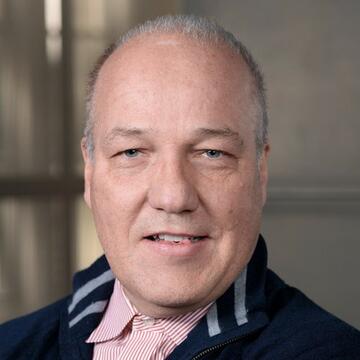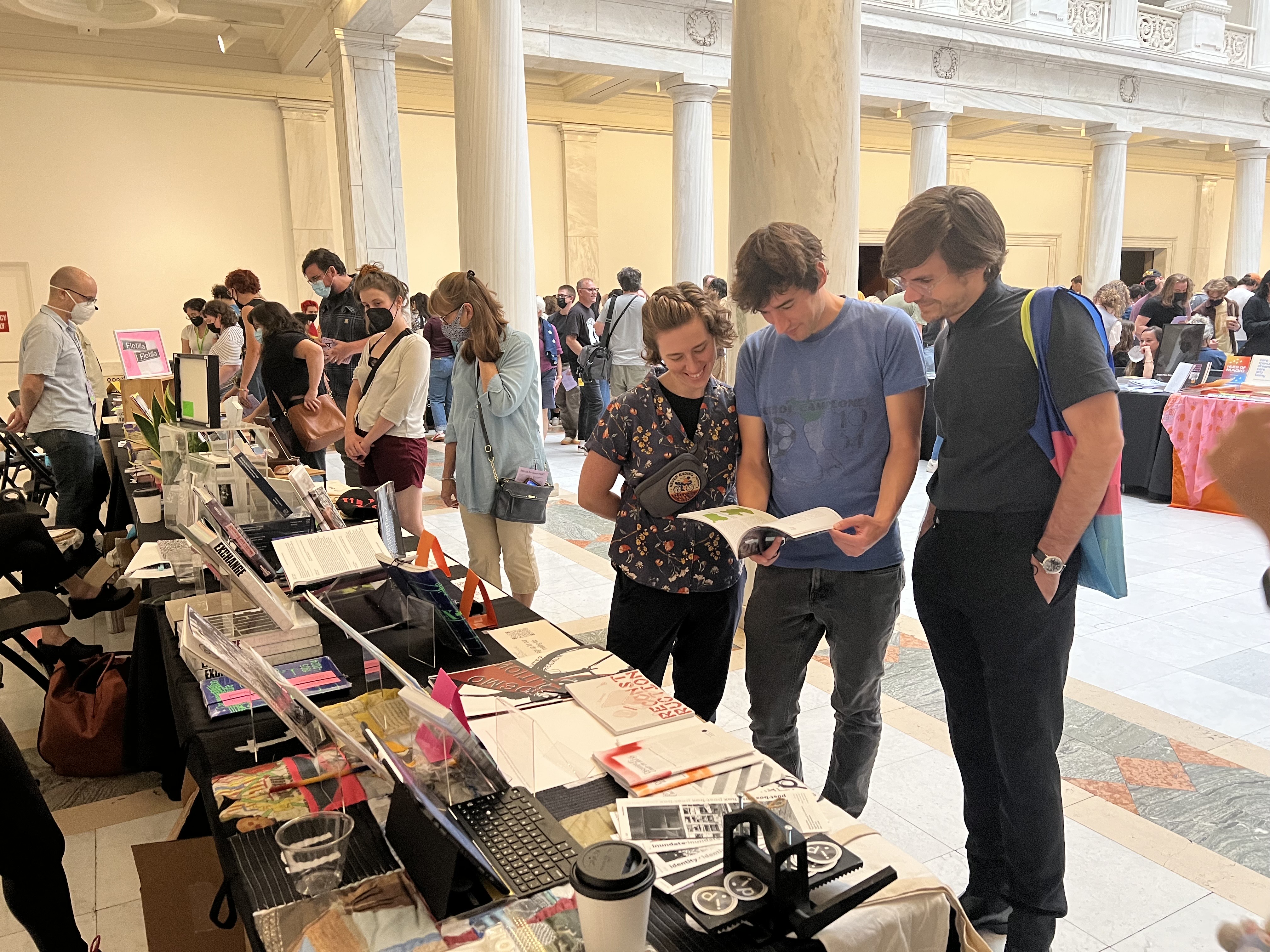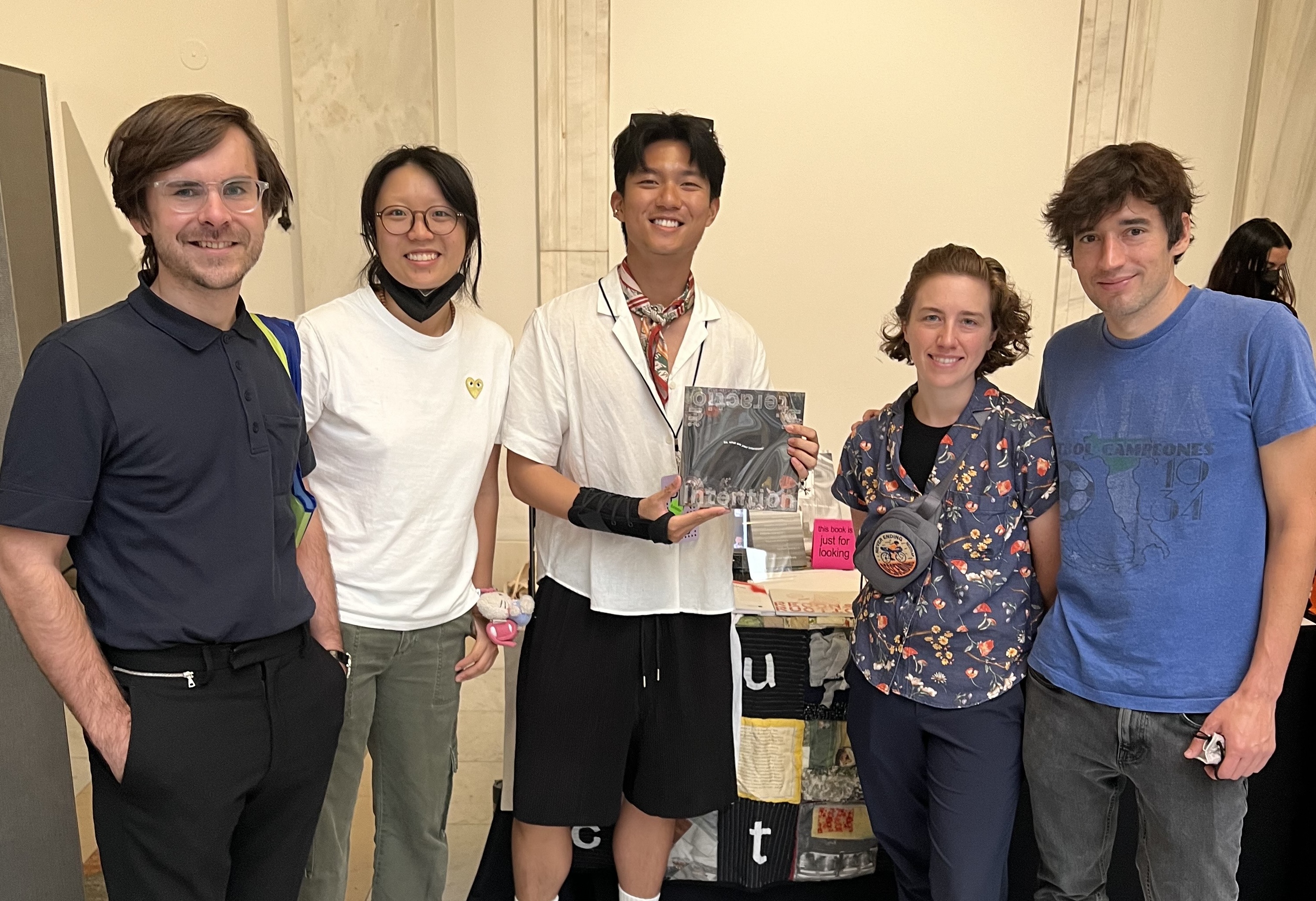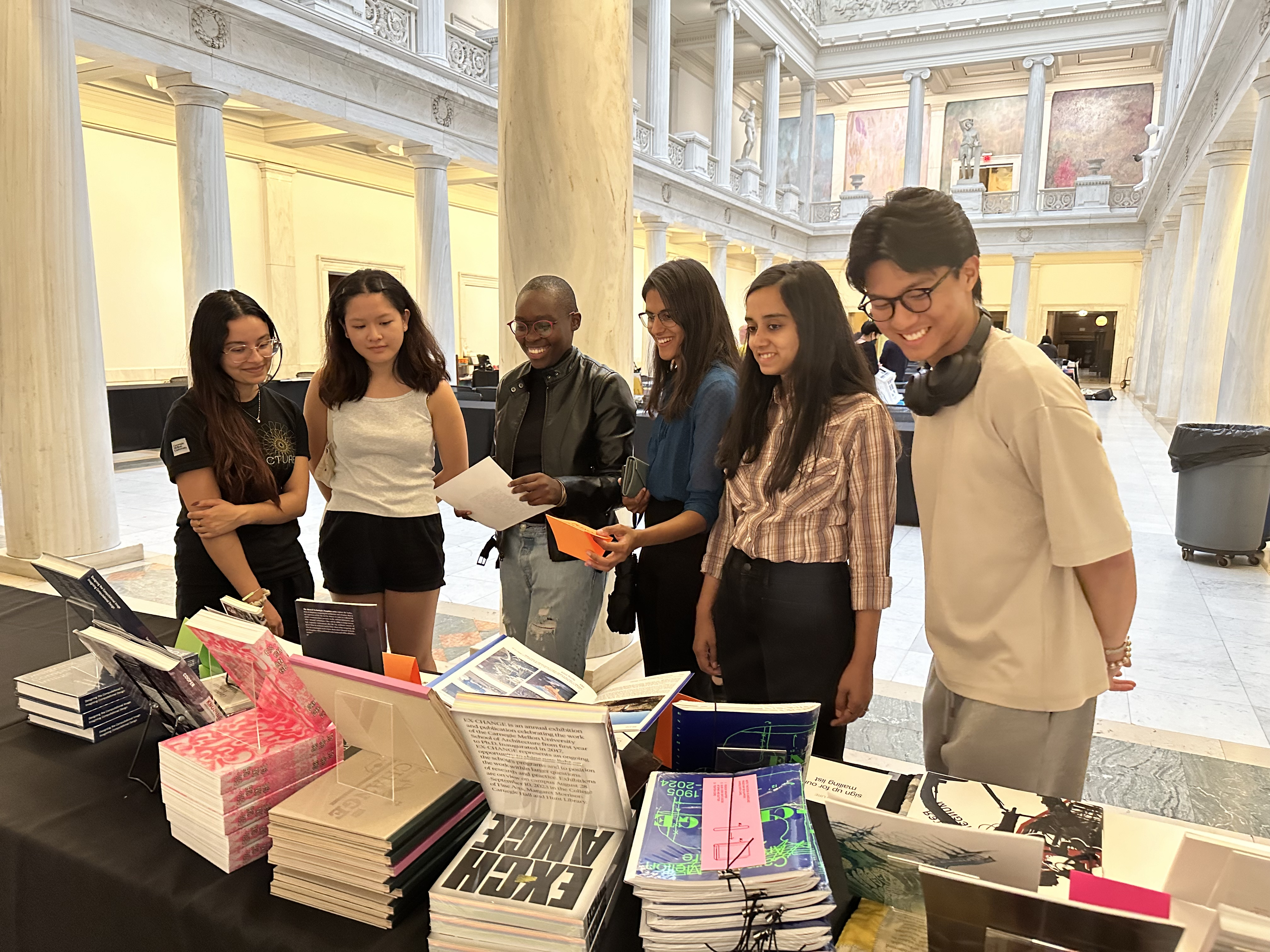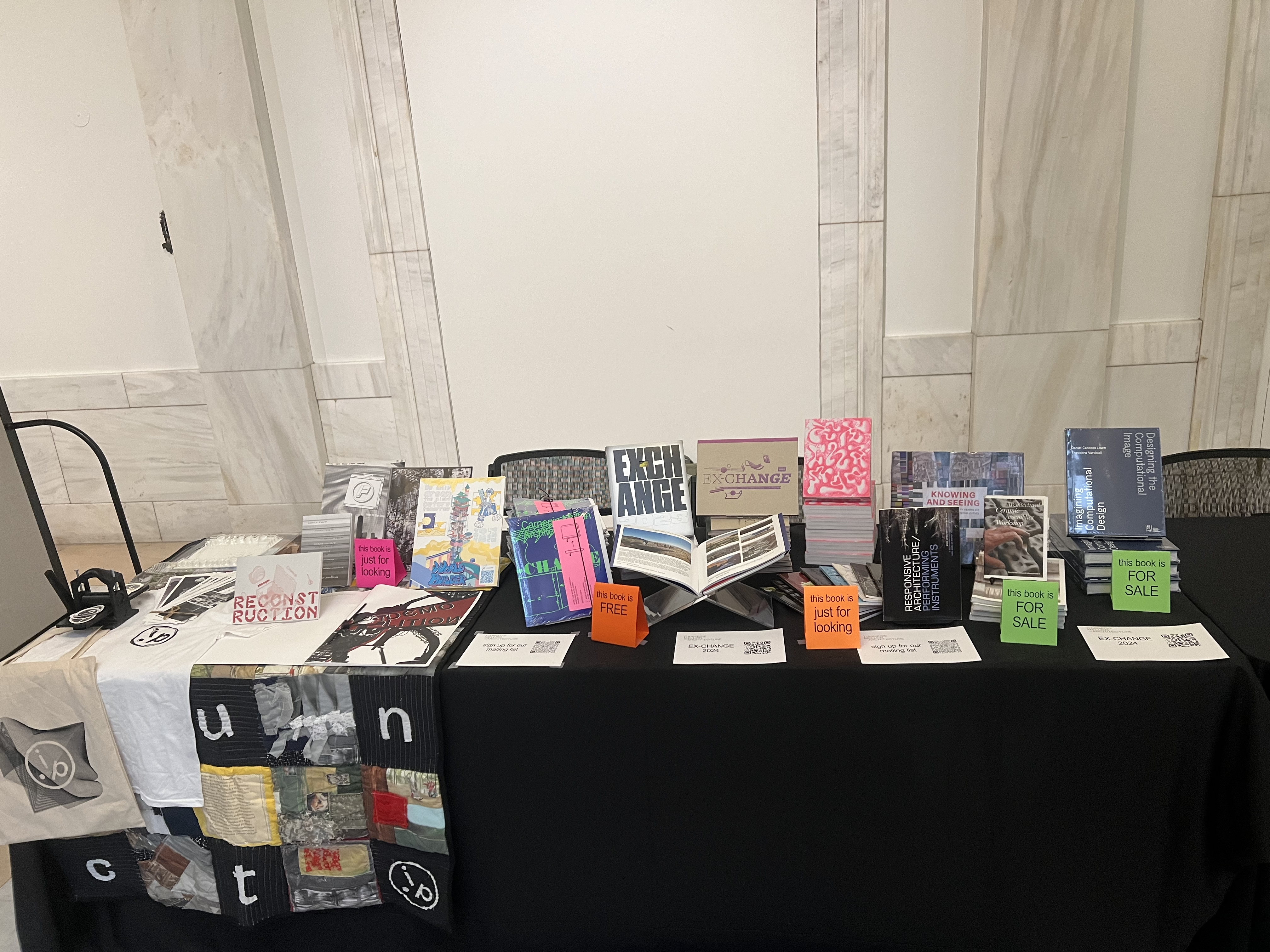e-SPAN Newsletter v035: Stochastic Parrots
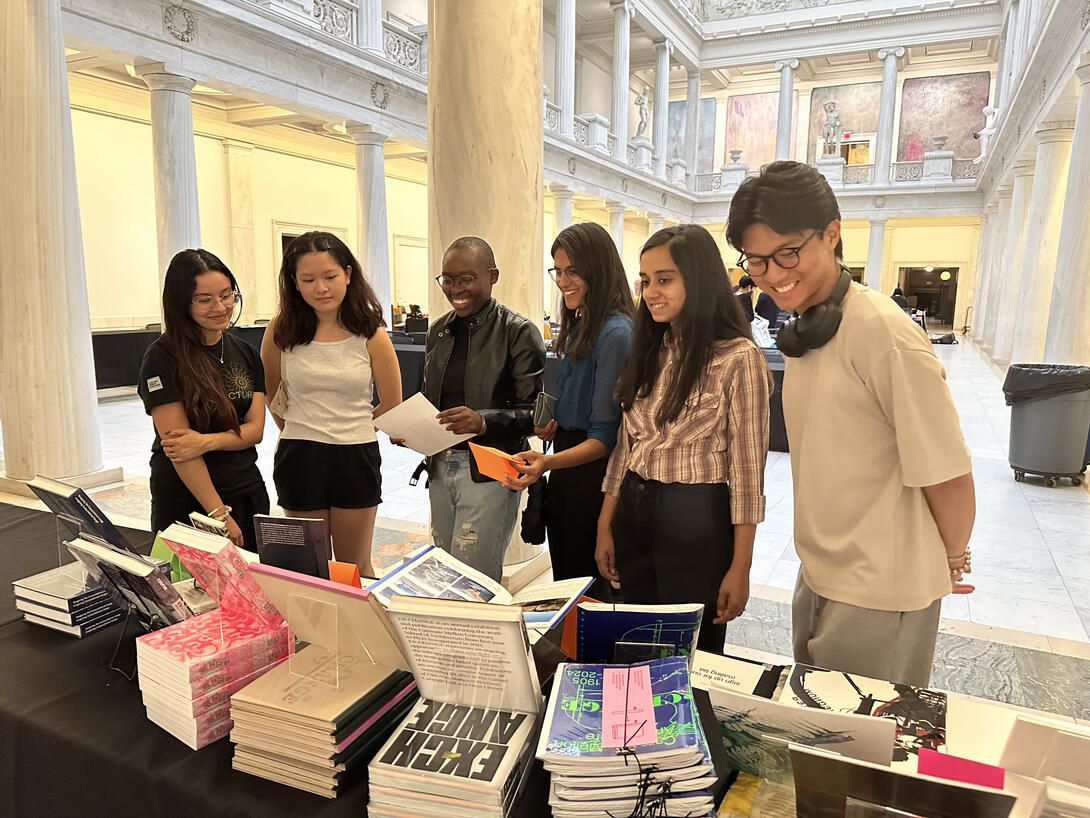
Dear School of Architecture Community,
I am happy to introduce the second edition of e-SPAN for the 2024-25 academic year. It continues with the theme of artificial intelligence (AI), which is the focus of many of Carnegie Mellon Architecture’s people, activities and courses this semester.
As we introduced in last month’s issue, AI is the driving force behind this semester’s Public Programs, which focus on the theme of Artificial (and Othered) Intelligences. This week’s Public Program with Zenna Tavares introduced us to his nonprofit lab Basis Research Institute, an organization developing universal reasoning systems to help solve complex scientific and societal problems. Also this week, faculty Daragh Byrne and Vernelle A. A. Noel hosted a virtual faculty dialogue for CFA alumni on the topic of AI and the future of art, where they debated whether something made by a machine is still “art.” And Visiting Scholar and current American Society for Cybernetics president Paul Pangaro hosted the second in a series of three #NewMacy conversations about the role of social interaction, ethics and agency in the face of AI. It’s been an incredibly engaging and exciting week examining the role of AI in our work.
For this month’s issue, we sat down with Pangaro for a conversation about the ethics of artificial intelligence and how to mindfully develop an academic pedagogy around AI. He stresses the deep differences between human intelligence — based on lived, shared experience — and the “stochastic parrot” of the soulless machine. Pangaro is skeptical about the idea that any machine can ever truly “think,” “learn” or become “intelligent.” We invite you to read on for a philosophical and practical conversation about AI.
Next week, our American Institute of Architecture Students (AIAS) chapter welcomes several hundred architecture students from across the northeastern U.S. to the AIAS Northeast Quad Conference: DES[AI]GN: Artificial Intelligence in Architecture. The students have developed an exciting four-day program of lectures, hands-on workshops, tours of Pittsburgh and other events to highlight how AI is reshaping design, urban planning and construction — and ultimately influencing the architectural renaissance of Pittsburgh and beyond. They aim to “inspire and empower designers and AI enthusiasts to shape a future where AI-driven architecture enhances the city’s livability, sustainability and cultural vibrancy.”
We look forward to continuing to explore AI’s role in the pedagogy and practice of architecture in our forthcoming issues in this series.
Kai Gutschow
Associate Professor & Associate Head for Design Ethics
Associate Professor & Associate Head for Design Ethics
Visiting Scholar and current American Society for Cybernetics president Paul Pangaro sat down with e-SPAN to wax both philosophical and practical about artificial intelligence. “An academic pedagogy of architecture,” said Pangaro, “must encounter, embrace, not be afraid of, and ‘delve’ deeply into AI. That it’s a critical part of how we live every day is a given; it’s not new. The questions, then, become: so what, and what do we do with it?”
What, indeed? The following interview has been lightly edited and condensed.
One deceptively simple question for you, Paul: what is AI good for?

It’s good for looking for patterns, examining large data sets, and coming up with certain kinds of conclusions about those data sets. Of course, I’m also interested in what it’s not good for — what we must be careful not to apply it to, or apply it with caution that comes in advance of making it, not after, as is the usual case in the market today.
I think the biggest trap is when people say that AI “understands,” “means,” “knows,” because it can't do any of those things; certainly today's technology can't. There are people who benefit from claiming that large language models and generative AI are on the path towards sentience, toward general intelligence. I think that's nonsense, and I think it's demonstrably nonsense.
There's an old analogy for AI: you're climbing a tree, and you climb a little further, and you think you're getting closer, but you're never going to get to the moon. You're not going to get to general intelligence from the AI perch that we’re on. I believe that position is more defensible than its opposite.
What’s keeping AI from replicating human general intelligence?
Two things. First, I don't think that a stochastic parrot running in a digital machine is as likely to come to a humane, organic, biologically consistent proposal as is a humane, organic, biological creature. Also — and many people disagree with me about this — I believe there's a difference between a disembodied machine that makes a sentence and the human that makes what seems to be the same sentence, because the human’s expression comes out of experience being human, having a life, having emotions and being an analog creature. Machines are none of those things. They can appear convincing; we can imagine that they are doing what humans do. A stochastic parrot is really convincing. But it’s not making something creatively new.
So, how would you suggest that thoughtful people engage with AI tools, especially in design practice?
Many researchers are offering excellent proposals specific to given fields: education, medicine, administrative tasks, to name very few. But let me offer a less common, much broader frame. The Chilean biologist and philosopher Humberto Maturana made a very simple, but I think beautiful and elegant, proposition: before we make something new, let's pause a moment and ask ourselves, what do we want to keep — or, as he phrases it, what do we want to “conserve”? What are our values? What are we worried about losing? What do we not want to sacrifice to this new technology?
Now, some people say, oh, that's a constraint, and we should be unconstrained. But Maturana responds wonderfully to that concern. He says, if you decide what you want to conserve, you open a space of possibilities. And within that space, you can be free to create because you know you're holding onto what you don't want to lose — like humanity, ethics, fairness, accountability, transparency, special types of creativity.
So I'm not suggesting we pause for years and years so that China can take over the field. That's what the industry is worried about. But that's the commercial companies’ excuse to not be held back, to be unregulated, to do whatever they want. We needn’t be called Luddites to be thoughtful about what we want to keep.
You’re suggesting that designers have the human prerogative to engage in explicit conversations, perhaps at the level of the firm, about what they want to conserve as they begin to explore AI tools in their practice.
Yes. It’s more than a prerogative, it’s an ethical imperative. It works at the scale of giant companies, at the scale of governing bodies, at the scale of design firms — even a startup in a garage has this ethical responsibility. And I think educators are responsible for making this clear to our students. Open conversation is irreplaceable. We can't do something together until we agree on it, and we can't agree until we have a conversation. A key purpose of conversation is to increase possibilities. I'm limited right now by who I am; everyone is. But if, in conversation, you increase my worldview, then not only have you enhanced who I am, you may even give me a path to become something beyond what I am. And I hope the same for you — and so, for us.
These open conversations to explore possibilities, our values and what we wish to conserve are themselves critical to conserve. Nothing less will keep human values and ethical outcomes at the forefront of our attention where they belong.

Artificial Intelligence in Our Pedagogy
In last month's issue, we told you about a fall mini course that introduces students to the use of AI tools in design. Now that the first half of the semester has concluded, instructor Jimmy Wei-Chun Cheng has shared a completed project with us so that we can learn more about the learning process and outcomes.
48-651 Vector Visions: Introduction to Image Processing and AI for Designers
Project Description: This mini course introduces computer vision and generative AI to students in architecture, urban design, sustainable design and related fields. It covers fundamental image processing using NumPy and OpenCV, along with generative AI concepts such as GANs and diffusion models.
Throughout the seven-week course, students explored the theory and applications of surveillance and machine vision through readings and guest lectures. The discussions covered a range of topics, including social and political issues, as well as artistic expression and storytelling through the lens of machines.
For the final project, students investigated the concept of “home” as it exists on the internet, comparing it to their personal memories of home. They curated a personal model that integrated their interpretation of home with generative AI models.
Final Project: Fragments of Home, Cities of Memory
Project duration: 2.5 weeks
Voiceover: Artlist.io
Narrative: Students and ChatGPT-4o (AI was utilized to create narratives based on students' personal interpretations of Home.)
Students: Visha Ahmad, Karthick Bangaru Giridharan, David Chen, Xiang Chen, Zhaowei Chen, Carla Flores Travez, Nirmal Kumar Kumarasamy, Taehyun Lim, Leslie Liu, Kansi Megavarnan, Sathvik Nekkanti, Rohith Saravanan, Migel Shehu, Khanishkaa Viknesh, Ziru Wei, Chris Wu, Yujin Wu, Risa Xie, Mingyang Zhu.
![Northeast Quad Conference DES[AI]GN: Artificial Intelligence in Architecture event graphic](/sites/default/files/styles/wide/public/2024-10/CMU-Quad-Conference-2024-2048x1325.jpg?itok=LOAp5SYp)
AIAS Northeast Quad Conference: DES[AI]GN: Artificial Intelligence in Architecture
Carnegie Mellon Architecture AIAS students have organized this year's Northeast Quad Conference, themed DES[AI]GN: Artificial Intelligence in Architecture. The student team has organized a series of lectures, workshops, tours and other events that will take place over four days from Thursday, October 31 to Sunday, November 3, 2024.
Learn more about the conference
Carnegie Mellon Architecture at the Pittsburgh Art Book Fair
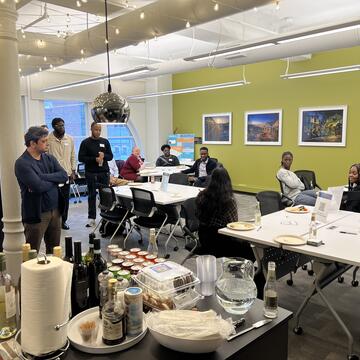
UDream x AIA
This year's UDream cohort visited the AIA Pittsburgh office for a meet and greet on October 3, 2024. Local Pittsburgh AIA members had the opportunity to meet the UDream fellows, learn about their experiences in the program and welcome them to Pittsburgh.
Now in its second year since being reinstated in the summer of 2023, UDream is a workforce development program that runs annually from June through November. UDream fellows move through three phrases of the program: first, a six-week academic intensive module; then, two one-week community engagement modules; and finally, a 14-week paid internship with Pittsburgh-based organizations. By eliminating cost as a barrier, UDream seeks to recruit individuals from underrepresented or under-resourced backgrounds. Many UDream alumni have chosen to stay in Pittsburgh to attend grad school or build their careers, creating a strong community around the program.
2024 UDream Employment Partners
The following firms participated in the 2024 summer match day, during which UDream participants interviewed for their fall internships, which are happening now. These local and regional architecture firms, construction managers, community developers and other professional organizations are dedicated sponsors of the UDream program and mission.
Carnegie Mellon Architecture alumni are invited to join us for a reception as part of KieranTimberlake’s book launch, author talk and special exhibit, Building Ghosts: Past Lives and Lost Places in a Changing City.
Join us in Philadelphia!
Alumni News & Updates
We invite all Carnegie Mellon Architecture alumni to keep us up to date on their awards, professional milestones and more. Send us your updates with a brief description and link to more information.
- Patricia Culley, AIA, LEED AP BD+C (B.Arch ’03) has been promoted to Principal at Bohlin Cywinski Jackson. Patricia previously served as an Associate Principal in the practice’s Pittsburgh studio and has consistently demonstrated exceptional leadership and a wide range of expertise, helping to elevate the practice and its work.
- UDream alum Alicia Volcy, LEED AP, NOMA has been named to Building Design + Construction Magazine's 40 Under 40 Class of 2024! This national program recognizes AEC rockstars for their career achievements, passion for the AEC profession, involvement with industry organizations, and service to their communities. Alicia is the owner and founder of Studio Volcy LLC, a multidisciplinary design and real estate development studio, and she is serving as an adjunct on the Carnegie Mellon Architecture faculty this fall.
- Christian A. Pegher (B.Arch ’93) has begun teaching at the University of Pittsburgh. He joins fellow Instructors Nick Seftas and studio lead Jozef Petrak teaching 36 students in Architectural Studies Studio 4. He enjoys observing the students’ creativity and the opportunity to convey his knowledge to eager recipients and hopes that this will be the start of many teaching opportunities. Christian is a fulltime Project Manager at AE Works Ltd.
